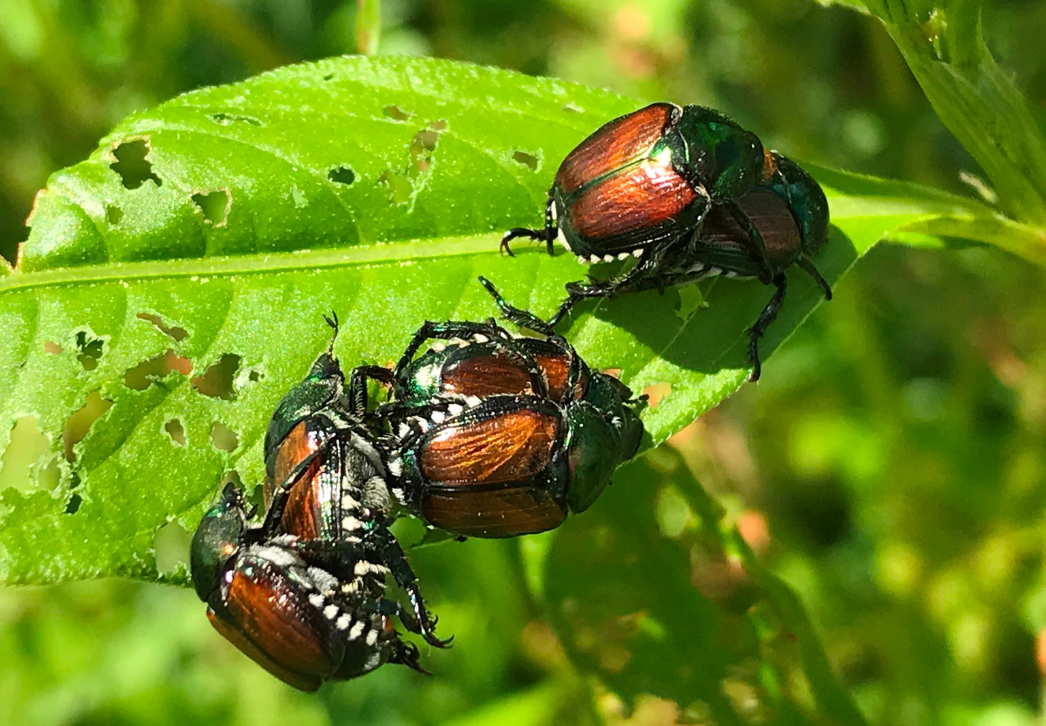|
|
The dry trend continued in Wisconsin, further reducing moisture for corn, soybeans, and other summer crops. Daytime highs were above normal for much of the week and reached 90°F from Boscobel to Ashland. Meaningful precipitation was restricted to the western half of the state where showers were widely scattered and light. Only a few locations, including La Crosse, received more than one inch of rain over the weekend and most places recorded less than one-tenth of an inch.
Rainfall continued to bypass the southern and eastern areas where persistent dry weather is adversely impacting crop growth. Crop condition ratings have continued to decline with the lack of significant rain this month. Corn estimates have been downgraded to 50 percent good to excellent as of June 17, a decrease of 16 percent from last week. Soybean ratings declined by 10 percent from the previous week, with 52 percent of the crop now rated as good to excellent.
The hot weather, combined with dry conditions, has contributed to a noticeable increase in the abundance of heat-favoring potato leafhoppers and spider mites. The season's first Japanese beetles have also begun emerging.
__________________________________
|
|
 Japanese beetles | K. Hamilton DATCP
  Emergence of the destructive Japanese beetle is beginning in southern Wisconsin. Beetle populations will steadily increase over the next six weeks and peak around mid-August. During the primary emergence and damage period, residents can expect to see beetles consuming a wide range of landscape ornamentals, garden plants, field crops, and trees. Favored hosts include basil, birch, grape, linden, mountain ash, plum, and rose.
The earliest Wisconsin Japanese beetle detection surveys began in 1937 and the first documented capture was in 1956 near Mitchell Park in Milwaukee. The state’s first infestation was confirmed in 1973 in Kenosha. At that time, it was thought that the range of Japanese beetles could not extend into northern Wisconsin due to climatic unsuitability, but it is now clear that this insect can survive and flourish as far north as Bayfield and Douglas counties. Populations reached historic highs in Wisconsin from 2016-2018 and have generally been lower in the past four seasons (with a few exceptions).
Chemical control of Japanese beetle is complicated, often ineffective, and can be harmful to pollinators and other beneficial insects. Instead, one of the most effective deterrents used by fruit and vegetable growers in DATCP’s pest monitoring networks is simple barrier netting (1/4 inch or less mesh). The nylon mesh netting can protect smaller plants such as berries, vegetables, herbs, shrubs, and young trees, as long as it fully covers plants and the edge of the mesh is secured to the ground. Netting should be in place by late June and maintained through August or harvest.
Soil insecticides for grub control in lawns or turf must be applied 3-4 weeks in advance of beetle emergence and are no longer advised for much of Wisconsin. Further, chemical control of grubs will not prevent future damage since the adult Japanese beetle can fly in from nearby areas.
|
|
 __________________________________
|
|
Light infestations of true armyworm larvae are common in corn and wheat fields. Surveys of wheat in the east-central region this week found low counts of 1-15 larvae per 100 sweeps, with the highest counts recorded in Dodge and Door counties. The levels noted were well below the economic threshold of three larvae per square foot for small grains.
Armyworm larvae are also feeding in the perimeter rows of corn, although no significant infestations were observed June 15-21. As a reminder, counts must reach two or more armyworms (3/4 to 1 inch or smaller) per corn plant on 25% of the plants, or one worm per corn plant on 75% of the plants to qualify for treatment. Continued scouting is recommended since localized armyworm outbreaks have been reported by growers and UW Extension specialists in the past two weeks. |
|
 __________________________________
|
|
|
|